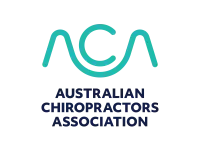
Headaches and migraines are one of the most common disorders to affect the nervous system and what we see in patients in our practice. They can be severely debilitating resulting in significant reduction in work capacity and social activities for sufferers.
A 2018 Deloitte report estimated 4.9 million Australians experience migraines costing the economy a whopping $35.7 billion. Tension headaches are even more prevalent with an estimated 7 million sufferers nationwide. Even though headaches are common, it does not mean they are normal. It is usually an indication that something is not quite right and may require medical advice from a health professional.
Tension Headaches
Dull, aching diffuse pain usually in a hatband formation (forehead and around the sides and back of the head). The pain can also sometimes be described as tightness or heaviness of the head. Many people will also report tightness and/or pain coming from their shoulders and neck. Tension headaches can be episodic or chronic in nature. Tension headaches can be caused by excessive stress, poor posture, anxiety, depression, excessive bruxism (jaw clenching and grinding), and fatigue.
Cervicogenic Headaches
Throbbing head pain usually beginning from the neck and radiating up to the back of the head and towards the front and into the eyes and face. They can sometimes be mistaken for a migraine. Cervicogenic headaches stem from problems in the cervical spine like poor posture, degenerative conditions, disc issues and whiplash injuries.
Migraines
Severe throbbing or pulsing pain usually on one side of the head and can be accompanied with light / sound sensitivity, vomiting and/or nausea. Many cases of migraines are with auras – visual disturbances like flashes of light and spots, vision loss, speech difficulties and peripheral pins and needles. The causes of migraines are still being investigated but triggers can include hormonal changes, dietary factors, emotional upset and stress.
While some headaches are unavoidable, there are steps we can take to help minimise frequency and intensity.
- Manage your stress appropriately – e.g. meditation, regular stretch breaks, exercise, yoga, snd better sleep patterns / habits.
- Remain hydrated.
- Be mindful of your posture.
- Ensure your pillow and mattress are supportive.
- Ergonomic work stations.
- Heat pack for tight muscles or ice for acute spinal pain.
- Chiropractic care is highly effective in treating headaches by improving your spinal function and improving muscle tension. Our chiropractors can also recommend exercises / stretches and home advice to suit each individual’s situation.
If you are struggling with headaches please contact us to arrange a consultation so we can assist you in getting the relief you need.






